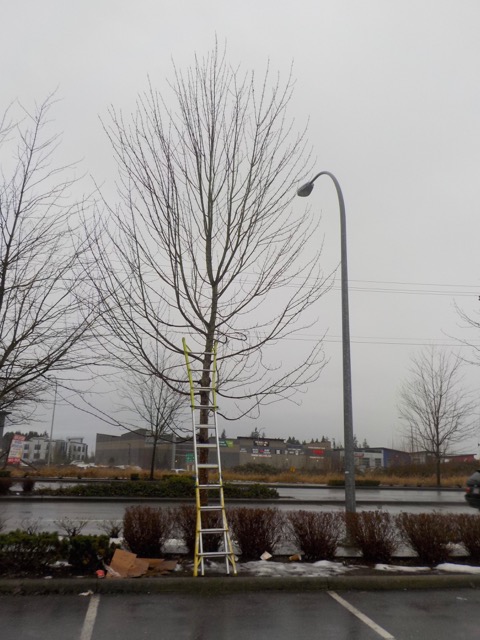Editor’s Note: This blog post was authored by John P. Martyn, (D) RLT, (C) OHS, BA, ISA Certified Arborist (PN0610), ASCA Graduate Consulting Arborist specializing in Commercial Tree Care Maintenance Programs & Certified Arborist Reports. He owns TCIA member company JPM Tree Service in Coquitlam, British Columbia. This advice originally appeared as an email to a local property manager, and details the benefits of pruning trees at malls and business centers.
Tree pruning, when applied correctly, can greatly benefit the tree and its environment. Not only does regular pruning help maintain tree health, it keeps your landscape looking fresh and inviting to visitors.
Check out these three reasons property managers should prune their trees:
#1 Sign Visibility
 Trees at retail outdoor businesses often block good sight lines for passing traffic. The property manager must take extra care to ensure that signs – particularly the main merchant signs advertising the business’s location – should be as visible as possible.
Trees at retail outdoor businesses often block good sight lines for passing traffic. The property manager must take extra care to ensure that signs – particularly the main merchant signs advertising the business’s location – should be as visible as possible.
Larger trees may be trimmed up to a maximum of 30% of overall height, in adherence with the ANSI A300 Standards. The International Society of Arboriculture also provides Best Management Practices (BMPs) for this procedure. It is my belief that all arborists should be adhere to these guidelines, regardless of whether they are an ISA Certified Arborists.
#2 Building Clearance
Trees are often planted too close to buildings. A good rule of thumb is to provide a 5 to 10 foot clearance from the building. This is measured from the outermost part of the building (typically the awning or overhang).
These close-proximity trees should be pruned “180 degrees.” This reduces the long-term maintenance costs associated with constantly pruning back unwanted branches that invariably produce a “crop” of suckers shoots. Pruning done back to the trunk with a proper branch collar cut is an acceptable approach. From the street view, the tree looks to be a whole tree. From the inside, however, it is “half” a tree.
If the tree gets particularly large – over 50 feet, for example – then there may be a risk of ending up with a lopsided tree. For this reason, have your arborist recommend pruning practices on a tree-by-tree basis.
#3 Parking Accessibility
Once the trees near your business sign(s) and building(s) have been treated, it is time to address the remaining trees on the property. Trees in the general parking lot areas, for instance, will need to be pruned up to accommodate cars. This is generally done to a height of 8 to 13 feet, and should not exceed 30% of the tree’s overall height, per the A300 Pruning Standards. A “lollypop tree” is not appealing to the general public.
If the tree is tall enough, your arborist may want to prune high branches that might otherwise obstruct large vehicles such as pickup trucks, vans, or trailers. Many tradespeople use the malls, and they too need clearance for parking their vehicles.
Hire a Professional
Are you a property manager searching for professional tree care? Hire a TCIA Accredited tree care company, which will have the knowledge, training and equipment necessary to give your business the best care available.
Search for qualified tree care in your ZIP code.